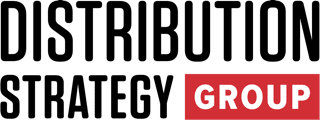The distribution game has fundamentally changed. While many executives still chase yesterday’s playbook—squeezing margins here, cutting costs there—the most successful distributors are rewriting the rules entirely. They’re discovering that in 2025, profitability isn’t about what you sell or how much you mark it up. It’s about how intelligently you operate.
The Great Profitability Shift
For decades, wholesale distribution operated on predictable formulas. Buy low, sell high, manage inventory, serve customers. The winners were often those who could negotiate the best supplier terms or had the deepest pockets for inventory investment. But artificial intelligence and automation have shattered those assumptions.
Today’s profit leaders aren’t necessarily the biggest players, they’re the swiftest. They’re using artificial intelligence (AI)-driven demand sensing to optimize inventory turns while maintaining service levels that seemed impossible just three years ago. They’re automating quote processes that once took hours, delivering responses in minutes while their competitors are still pulling data from multiple systems.
Consider this reality: a mid-sized distributor with smart automation can now outperform a much larger competitor who’s still operating with manual processes. The technology gap isn’t about efficiency—it’s become a competitive moat that’s widening every quarter.
Beyond Traditional Margin Management
The old approach focused heavily on gross margin as the primary profit lever. While margin management remains important, it’s no longer sufficient. Modern distributors are discovering profit in places that were previously invisible or unmanageable.
Cost-to-serve analytics reveal which customers are truly profitable after accounting for delivery frequency, order size, and service requirements. Dynamic pricing algorithms adjust in real-time based on demand patterns, inventory levels, and competitive positioning. Automated accounts receivable systems free up working capital while improving customer relationships.
These aren’t futuristic concepts, they’re operational realities for distributors who’ve embraced the new rules. A regional electrical distributor recently increased earnings before interest, taxes, depreciation and amortization (EBITDA) by 340 basis points in eighteen months, not through price increases, but through intelligent automation of previously manual processes.
The Speed Advantage
Speed has become the ultimate differentiator. When a customer needs a complex quote for a multi-phase project, the distributor who responds first with an accurate, complete proposal typically wins—regardless of whether their pricing is the absolute lowest.
But speed isn’t about responsiveness. It’s about operational velocity across the entire business. Fast inventory turns. Quick resolution of returns. Rapid identification of margin opportunities. Swift adaptation to market changes.
Automation makes this speed possible without sacrificing accuracy or customer service. In fact, automated systems often deliver better service consistency than manual processes, which are subject to human variation and fatigue.
The Integration Imperative
The most successful distributors aren’t just implementing individual tools, they’re creating integrated ecosystems where data flows seamlessly between pricing, inventory, customer service, and financial systems. This integration reveals insights that would be impossible to detect in siloed operations.
For instance, when demand sensing algorithms communicate directly with purchasing systems, distributors can optimize their supplier relationships and inventory investments simultaneously. When customer service interactions automatically update pricing models, the entire organization becomes more intelligent with every transaction.
What This Means for Your Business
The window for competitive advantage through automation and AI is still open, but it’s closing quickly. Early adopters are building operational capabilities that will be difficult for competitors to match. They’re not just improving their current operations—they’re fundamentally changing what’s possible in wholesale distribution.
The question isn’t whether your organization will eventually adopt these technologies. The question is whether you’ll be among the leaders who shape the new competitive landscape or among the followers who struggle to catch up.
At the Profit and Productivity Summit this November 10-12 in Chicago, you’ll discover exactly how forward-thinking distributors are implementing these new rules of profitability. You’ll see real-world case studies, learn from industry pioneers, and network with executives who are already seeing transformational results.
Don’t let your competitors rewrite the rules without you. Register today and ensure your organization is positioned to lead in the new era of wholesale distribution profitability.
Join us at the 2025 Profit and Productivity Summit, Nov. 10–12 in Chicago.
See firsthand how leading distributors are using automation and AI to double down on profitability—and how you can too.
As Chief Operations Officer of a Distribution Strategy Group, I'm in the unique position of having helped transform distribution companies and am now collaborating with AI vendors to understand their solutions. My background in industrial distribution operations, sales process management, and continuous improvement provides a different perspective on how distributors can leverage AI to transform margin and productivity challenges into competitive advantages.

